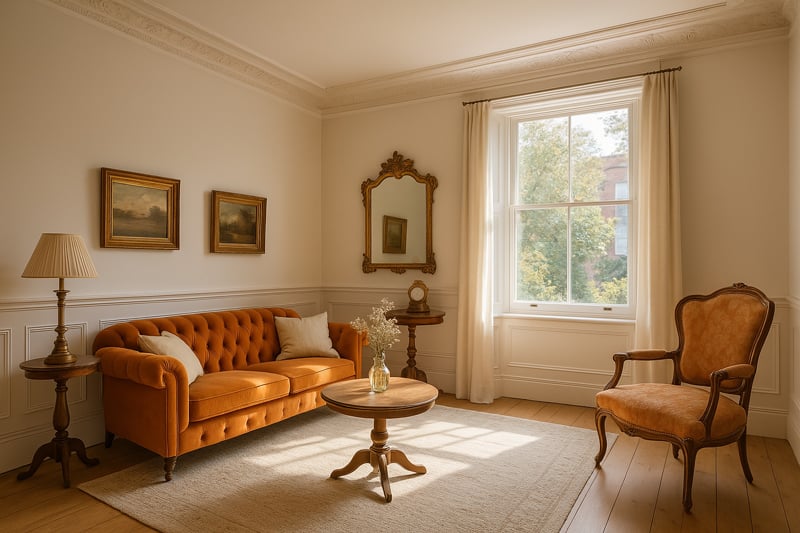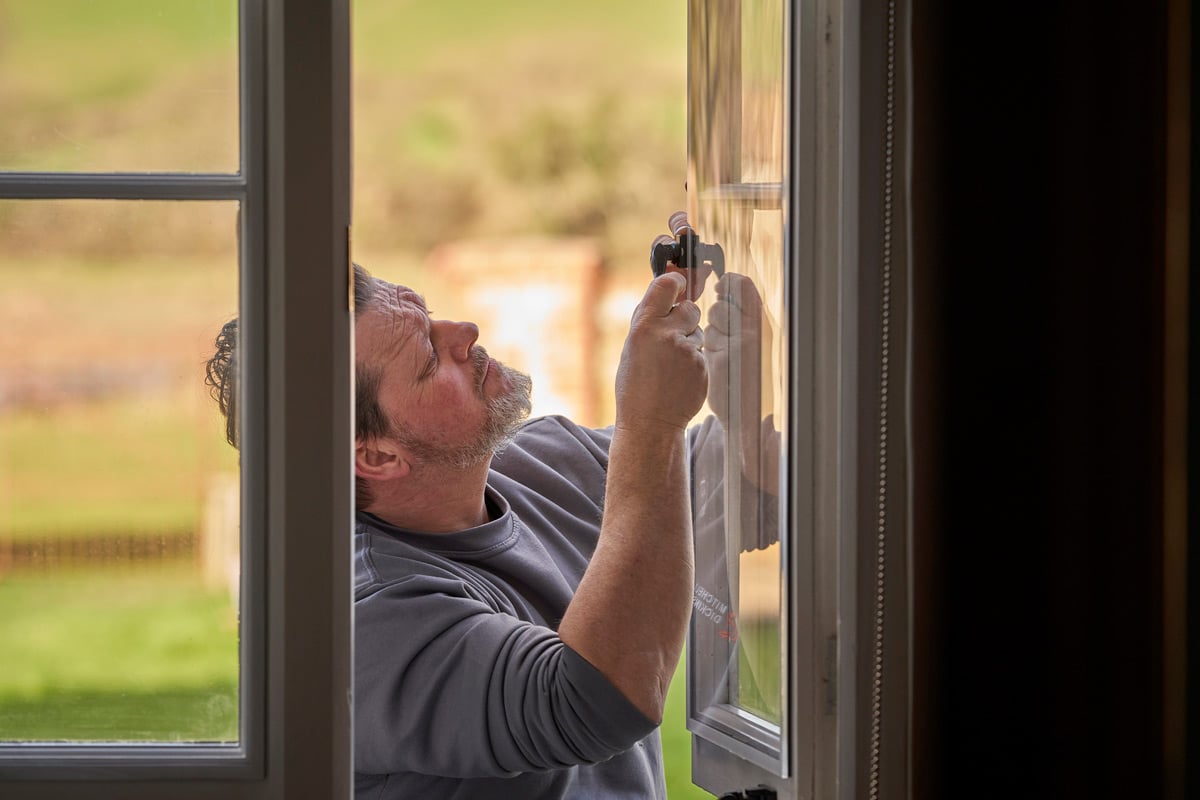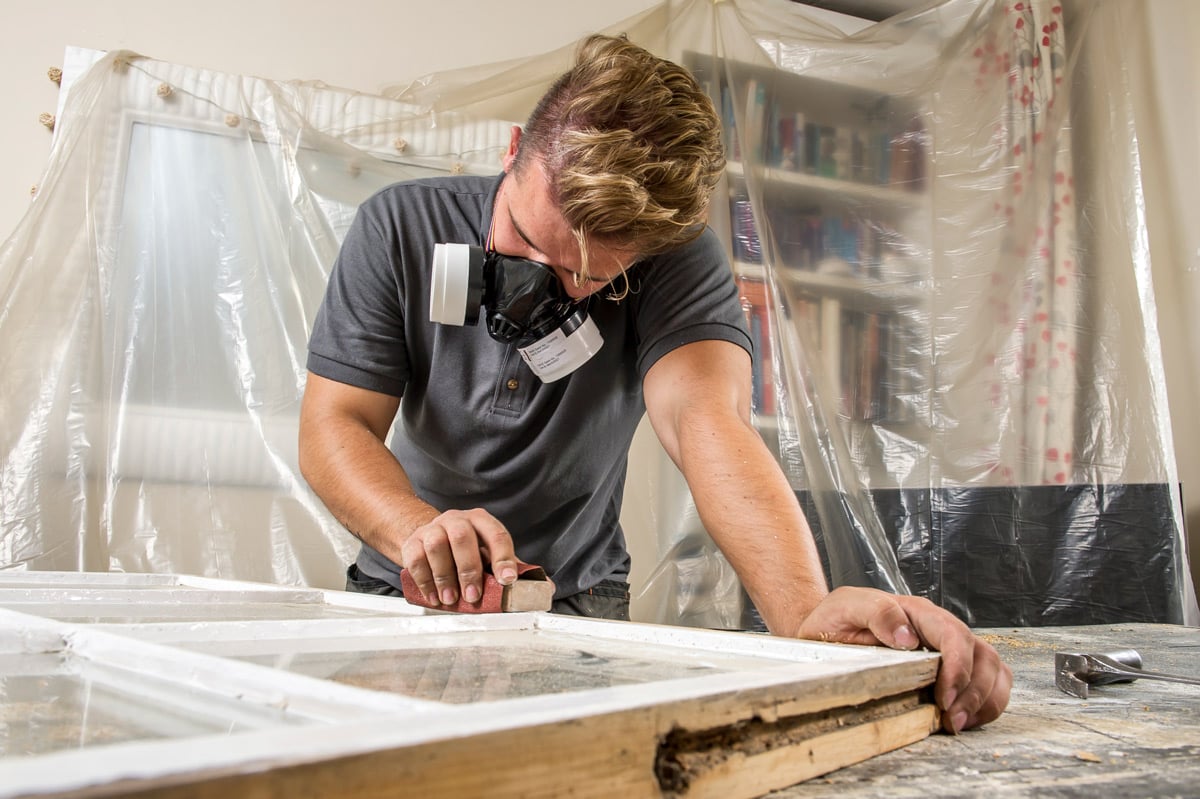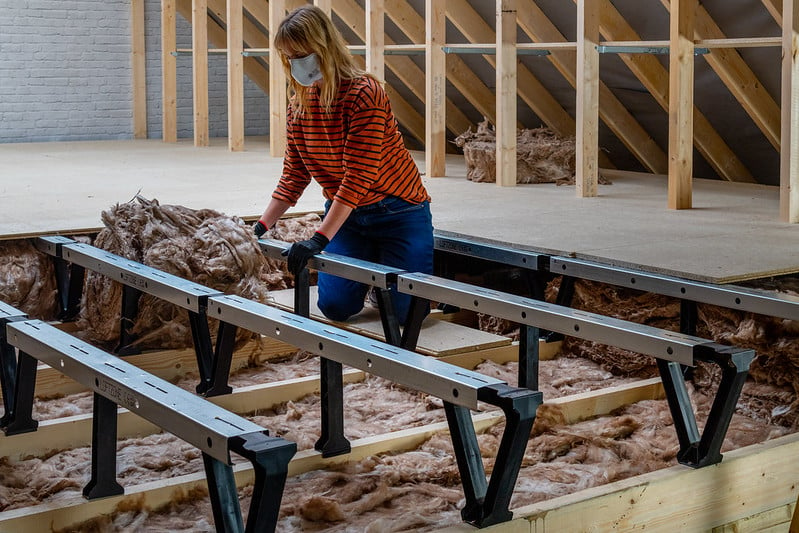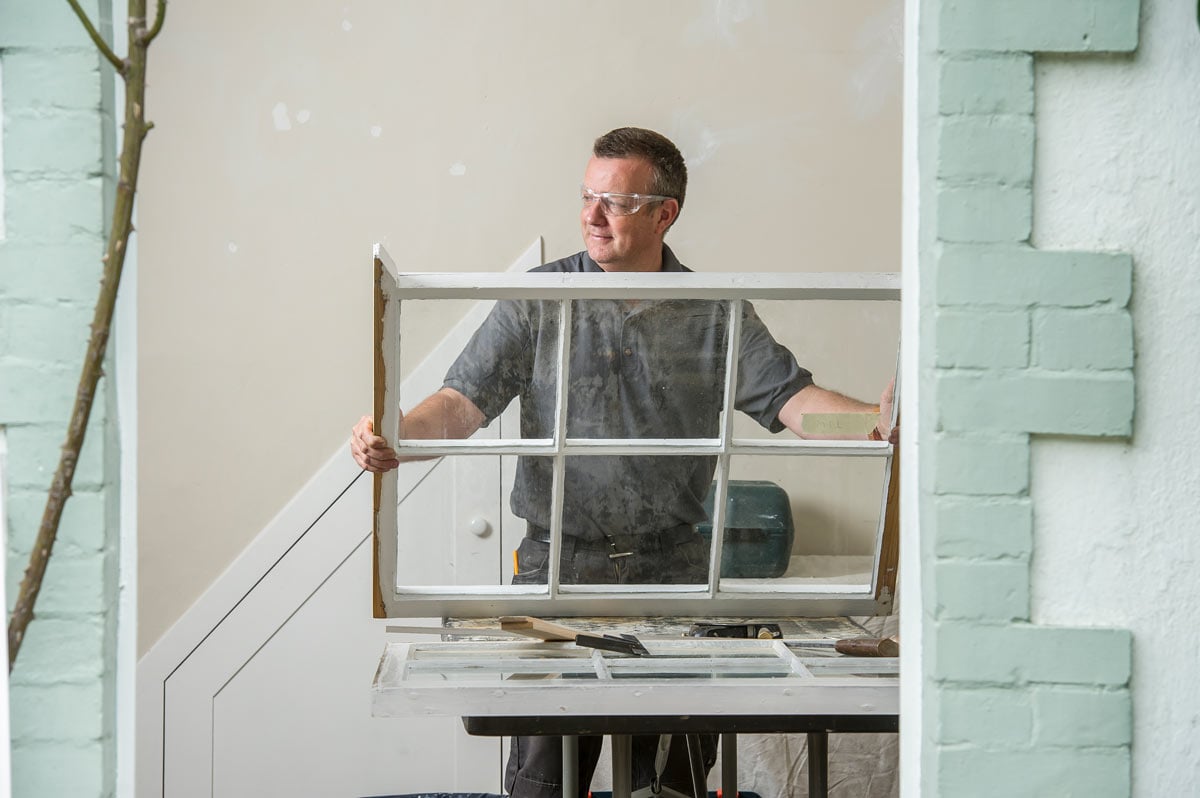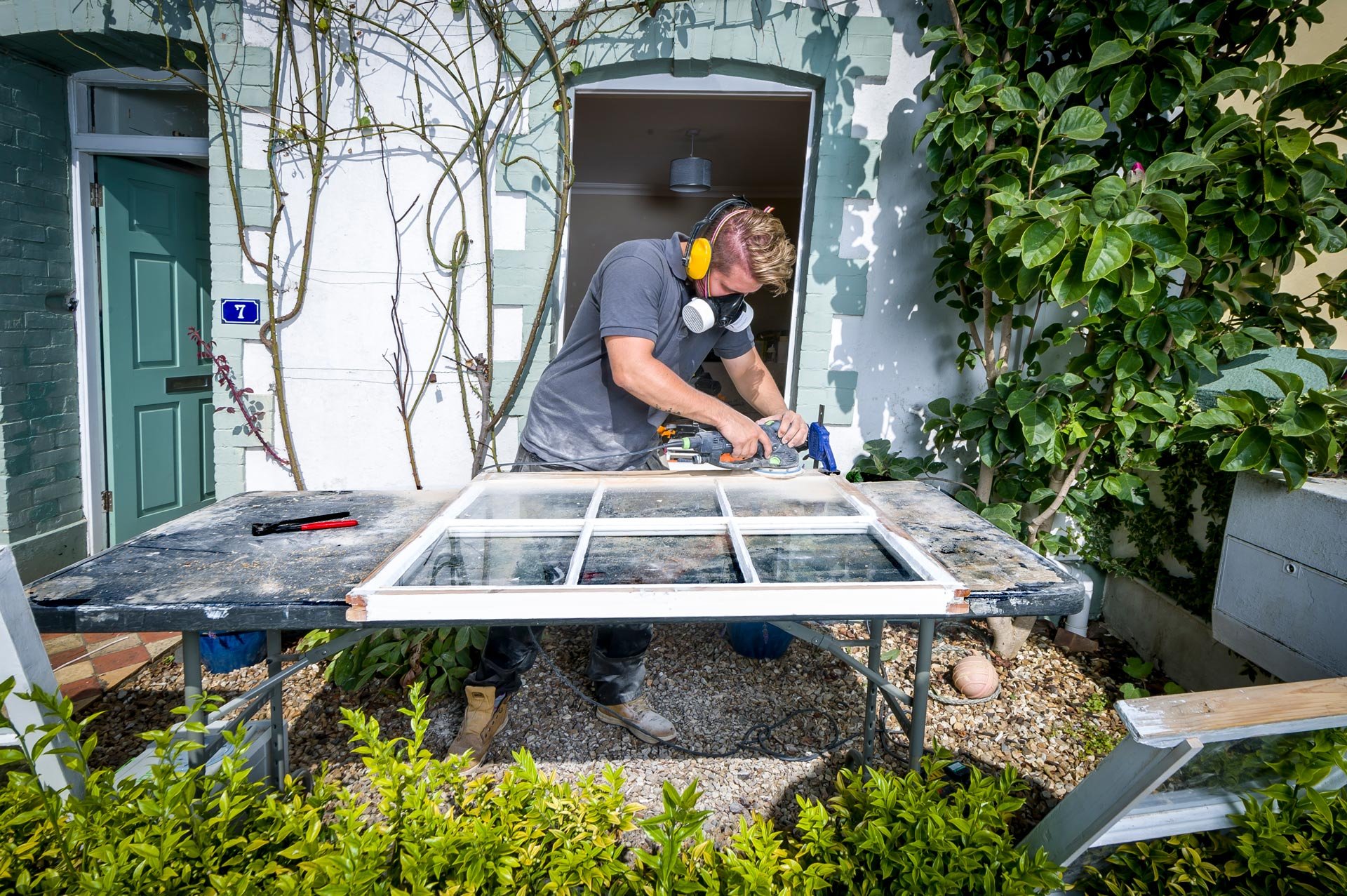Our high-quality sheep’s wool loft insulation will save around 10% on your heating bills. While sloping ceiling insulation is a canny way to thwart heat loss in difficult-to-insulate areas.
Eco-friendly sheep’s wool loft insulation
We install Thermafleece loft insulation made from sheep’s wool. This excellent loft insulation provides significant heat insulation, keeping your period property toasty in winter and saving on your fuel bills.
Thermafleece is a natural and eco-friendly material that has many beneficial properties. It has a 60-year life compared to 20-30 years for glass wool, and an increase in insulation properties in damp conditions. It’s treated with natural borax to prevent damage from pests and it won’t irritate your skin or respiratory system. It also supports British sheep farmers – improving economic resilience – and uses little energy in its manufacture.
When we insulate your loft, we can also install the unique Loftzone flooring system, which means you can still store items in your loft.
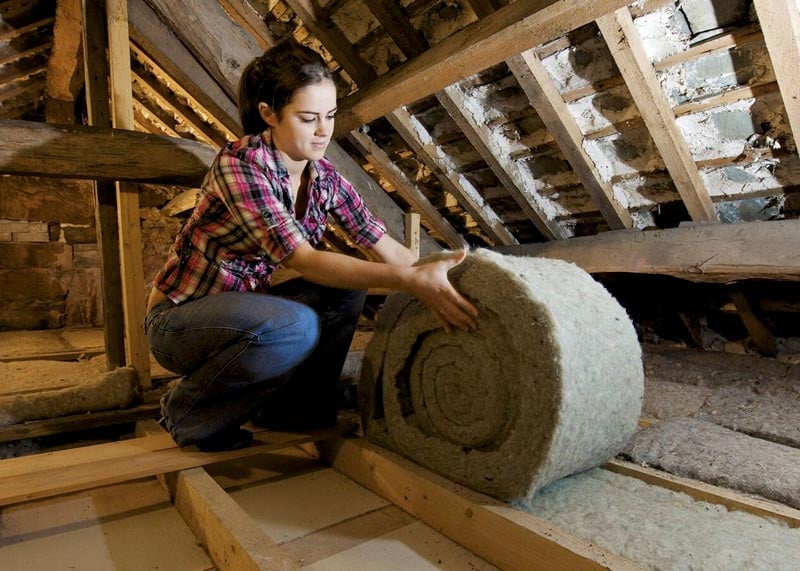
Sloping ceiling insulation
Why insulate a sloping ceiling?
Many older properties have rooms partly or fully tucked into the roof space, with sloping ceilings that are often left uninsulated. These areas can become uncomfortably cold in winter and stiflingly hot in summer. This makes them difficult to use without relying on energy-hungry heating or cooling.
Our wood fibre sloping ceiling insulation can make these spaces more comfortable by using natural, breathable materials that are ideally suited to period and listed buildings.
Breathable and built for heritage
This upgraded insulation method uses wood fibre insulation, finished with lime plaster and natural paints, to create a breathable system that allows moisture to pass through the building fabric. This is crucial in older homes, where the wrong materials can lead to trapped moisture, internal damp, and mould.
This approach allows us to insulate sloping ceilings from the inside, without disturbing the external roof covering. Our craftspeople work carefully around exposed rafters and purlins, making sure that character features are preserved.
Why use wood fibre?
Unlike conventional PIR boards or cement-based plasters, our natural insulation system keeps you and your home healthy. Recommended by Historic England and other conservation bodies, wood fibre and lime plaster form a breathable combination that helps your building manage moisture safely and naturally.
Benefits of wood-fibre sloping ceiling insulation:
- Transforms cold or hot top-floor rooms into usable spaces
- Reduces energy bills by improving thermal performance
- Breathable system helps manage moisture and reduce damp risk
- Uses sustainable materials: wood fibre, lime plaster, natural paint
- Discreet internal installation – no need to disturb the roof
- Finished to suit period interiors and protect historic features

Working across the South of England
Our Thermafleece sheep’s wool loft insulation is ideal for period homes and listed properties. We can supply our Thermafleece loft insulation to owners of country homes and traditional period properties across the South of England.
We have operational teams across the South, South West and the Midlands, including London, Bath, Cornwall, Devon, Dorset, Somerset, Bristol, Gloucestershire, Monmouthshire, Worcestershire, Warwickshire, the West Midlands, Oxfordshire, Northamptonshire, Buckinghamshire, Wiltshire, Hampshire, Berkshire, Surrey and Sussex.
Loft insulation works by creating a thermal barrier that reduces the transfer of heat between the inside of a building and the outside environment. It’s usually installed in the loft or attic space, directly beneath the roof. The primary goal of loft insulation is to improve energy efficiency by minimising heat loss in the winter and heat gain in the summer.
Insulating your loft is a fantastic way to reduce heat loss in your property. The insulation acts as a barrier, helping to retain the warmth generated within your home and reducing your energy bills. It helps to maintain a more consistent and comfortable indoor temperature, reducing the need for heating in the winter and cooling in the summer. An energy-efficient home with proper insulation is often more attractive to potential buyers and therefore may contribute to an increase in the value of your property.
The amount of energy you can save by insulating your loft depends on various factors, including the existing insulation, the climate where you live, and your heating habits. On average, it’s estimated that a well-insulated loft can result in energy savings of up to 10% on your heating bills.
The specific energy savings will vary, but loft insulation is generally considered a high-impact, cost-effective measure to enhance the energy efficiency of your home.
Draughts (or air infiltration) are often one of the biggest sources of heat loss in a building. In a typical ‘unimproved’ period building (one that has not had modern insulation measures applied) we estimate the draughts cause approximately 30% of total heat loss. To accurately measure the sources and rate of draughtiness (or air infiltration) an air pressure test is required.
However, most occupants know where the draughts come from and where they are worst because they can feel it! Windows, doors and chimneys will normally be responsible for the majority of the draughts. Mitchell u0026 Dickinson’s surveyors will help you identify the draught sources and their contribution to your building’s thermal performance.
Yes, damp is caused when insufficient insulation leads to temperature differences between the indoor air and the loft space. When warm, moist air from inside the house comes into contact with the cold surfaces in the loft (such as the roof or walls), it may lead to condensation. This can contribute to dampness and create an environment conducive to mould growth.
Good quality loft insulation and adequate ventilation is crucial for maintaining a balanced moisture level in the loft space. Without proper ventilation, dampness may become a problem.
There are several different types of loft insulation available, including fiberglass insulation, mineral wool insulation, cellulose insulation and reflective foil insulation. One of the most eco-friendly types of loft insulation is made from natural sheep’s wool.
This natural and eco-friendly material has many beneficial properties including a 60-year life compared to 15 years for glass wool, and an increase in insulation properties in damp conditions.
Products such as Mitchell u0026 Dickinson’s eco-friendly sheep’s wool loft insulation are treated with natural borax to prevent damage from pests, are not irritating to skin or respiratory systems, support British sheep farmers – improving economic resilience – and use little energy in manufacture. Sheep’s wool insulation is also biodegradable, reducing its environmental impact at the end of its lifecycle.
While it is possible to install loft insulation yourself, it’s often worth hiring a professional to ensure it’s installed correctly and effectively. They will be up to date on the latest building regulations and will have the correct specialised equipment to complete the job. They’ll also have knowledge of achieving the desired thermal resistance and understand the required density and thickness of the insulating material.
Yes, and we recommend that you do because sloping ceilings have very high heat loss per square metre. This is because they usually consist of a sheet of plasterboard, a 100mm ventilated gap between the rafters, then battens, felt and tiles. If you compare this to an 18-inch wall or 12 inches of loft insulation, it becomes clear how little insulating effect they have, making them responsible for the coldness you’ll often find in these rooms.
Mitchell u0026 Dickinson’s sloping ceiling insulation consists of thermal laminate boarding, a high-efficiency insulation board with plasterboard attached which is applied to the underneath of the sloping ceilings by screwing through to the rafters. Gaps around the edges are then filled and the whole area re-plastered.
